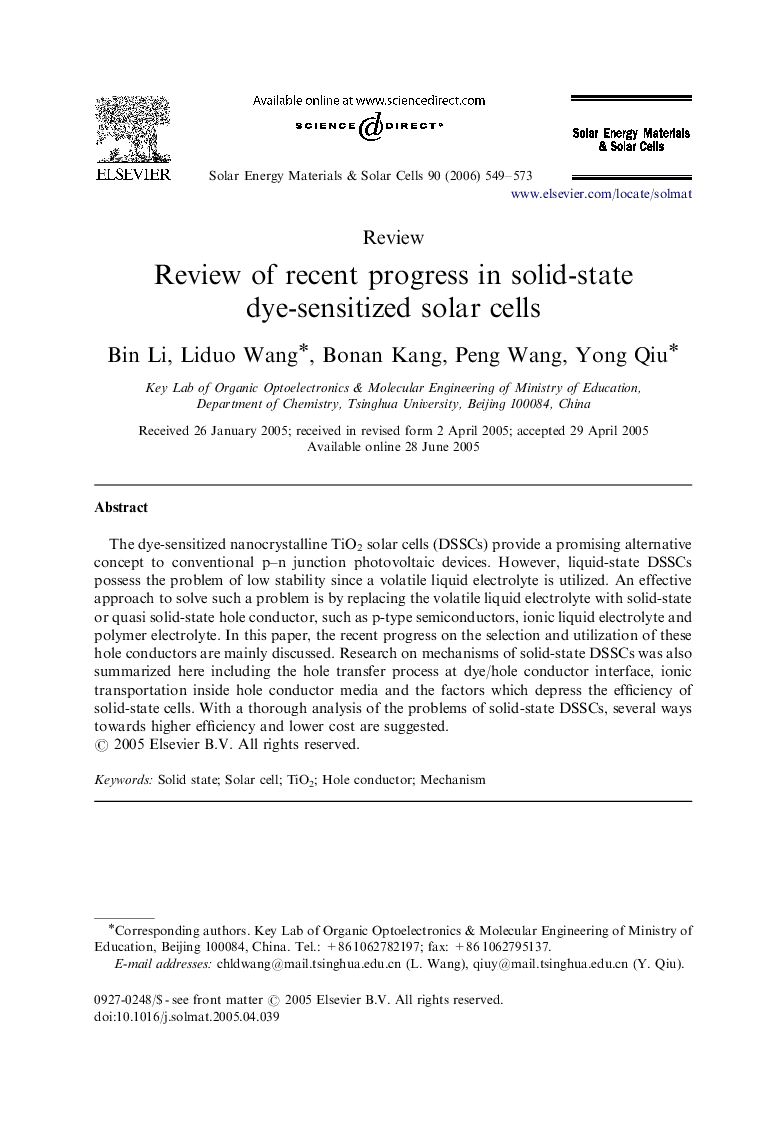| Article ID | Journal | Published Year | Pages | File Type |
|---|---|---|---|---|
| 81271 | Solar Energy Materials and Solar Cells | 2006 | 25 Pages |
The dye-sensitized nanocrystalline TiO2 solar cells (DSSCs) provide a promising alternative concept to conventional p–n junction photovoltaic devices. However, liquid-state DSSCs possess the problem of low stability since a volatile liquid electrolyte is utilized. An effective approach to solve such a problem is by replacing the volatile liquid electrolyte with solid-state or quasi solid-state hole conductor, such as p-type semiconductors, ionic liquid electrolyte and polymer electrolyte. In this paper, the recent progress on the selection and utilization of these hole conductors are mainly discussed. Research on mechanisms of solid-state DSSCs was also summarized here including the hole transfer process at dye/hole conductor interface, ionic transportation inside hole conductor media and the factors which depress the efficiency of solid-state cells. With a thorough analysis of the problems of solid-state DSSCs, several ways towards higher efficiency and lower cost are suggested.
